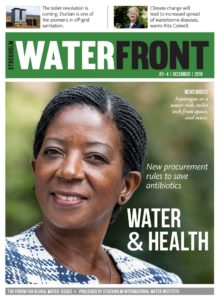Sustainable Pharmaceuticals – Public Procurement as a political tool
This report is the result of a project conducted within the Swedish International Water Institute (SIWI) and its cluster group Water and Pharmaceuticals. The purpose of the project was to survey the current methods for setting sustainability requirements and monitoring compliance with them in the procurement of pharmaceuticals in order to identify areas for improvements. The recommendations highlighted in this report were submitted to the National Agency for Public Procurement prior to their process during 2016 to develop new environmental and social criteria in the procurement of pharmaceuticals. The report also aims to inform relevant stakeholders about the possibilities and challenges with promoting sustainable development through public procurement.
This report is the result of a project conducted within the Swedish International Water Institute (SIWI) and its cluster group Water and Pharmaceuticals. The purpose of the project was to survey the current methods for setting sustainability requirements and monitoring compliance with them in the procurement of pharmaceuticals in order to identify areas for improvements. The recommendations highlighted in this report were submitted to the National Agency for Public Procurement prior to their process during 2016 to develop new environmental and social criteria in the procurement of pharmaceuticals. The report also aims to inform relevant stakeholders about the possibilities and challenges with promoting sustainable development through public procurement.
The report is based on a prestudy1 which was conducted during spring 2015, followed by a consultation round between the participating organisations in the cluster group Water and Pharmaceuticals. The report has been written by the project group ‘Procurement as a management tool’, but the cluster group as a whole has participated in- and supports the report’s content, discussion areas, reflections and conclusions.




